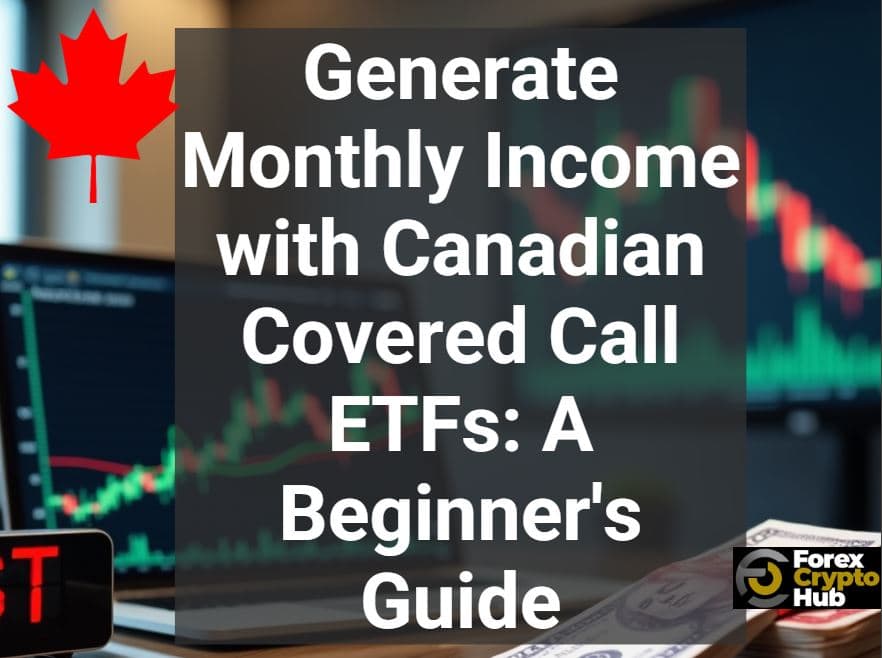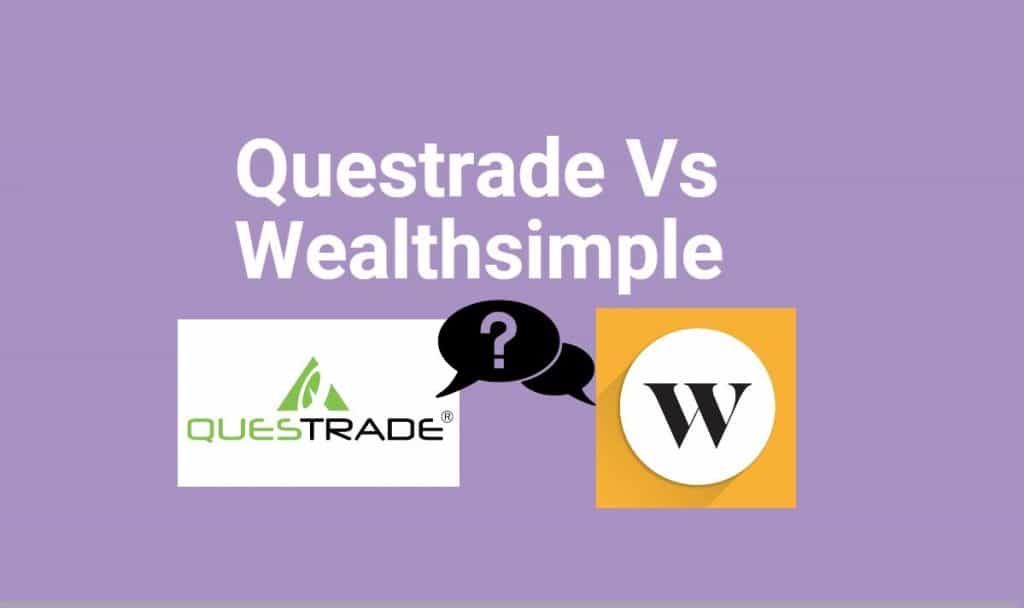Canadian covered call ETFs are generating yields as high as 20%. The market has exploded with over 120 covered call ETF strategies that catch income-seeking investors’ attention.
These remarkable yields span across multiple sectors. Bank-focused funds deliver 15% yields while energy sector options provide 13.71%. These ETFs also give investors a steady monthly income stream through regular distributions.
Table of Contents
The yields become more attractive because these funds can beat regular ETFs when markets move sideways or turn volatile. Your path to consistent returns might lie in covered call ETFs, whether you want retirement planning or monthly income generation.
Let’s explore everything about Canadian covered call ETFs in this piece. We’ll show you how they work and help you pick the right one for your portfolio. Ready to dive in?
What Are Covered Call ETFs?

Image Source: Quantified Strategies
Covered call ETFs are a unique way to invest that combines traditional ETF structure with options strategy to get higher income. These specialized funds hold a portfolio of stocks and sell (or “write”) call options on those same stocks or on an index that represents the stocks in the portfolio1.
How covered call ETFs generate income
These ETFs make money from two main sources:
- Dividend income from the underlying stocks in the portfolio
- Option premiums collected from selling call options
The fund sells someone else the right (but not the obligation) to buy the underlying securities at a set price (strike price) before a specific date1. The ETF gets an upfront payment called a premium in return24.
Here’s how it works: the covered call ETF buys a portfolio of stocks—like large-cap companies—and sells call options on these holdings1. The ETF keeps both the premium and the underlying stocks if the market price stays below the strike price until expiration24. The fund can then give these premiums to investors, usually monthly or quarterly25.
This strategy works best in specific market conditions. You’ll see covered call ETFs do well in flat or slightly bullish markets17. These funds might also lower your portfolio’s volatility because the premiums you get help cushion market downturns1.
The way the call writing strategy is set up affects both yield and growth potential. Options with higher strike prices might let you participate more in market gains but give you lower premiums than options closer to the current market price1. Short-term call options with regular rebalancing can create more yield because options lose value faster near expiration14.
Difference between regular ETFs and covered call ETFs
Regular ETFs and covered call ETFs differ in how they make money, handle risk, and perform:
Income Generation Regular ETFs make returns through capital appreciation and dividends. Covered call ETFs boost income by adding option premiums on top of dividends1. This often leads to much higher yields than traditional ETFs.
Performance in Different Market Conditions Covered call ETFs perform differently than regular ones:
- These ETFs might do better in bearish, volatile markets because they earn large premiums from selling options15
- They usually lag behind in faster rising markets because the strike prices of sold options limit their upside17
- The ETFs often beat regular ETFs during sideways or slightly bullish markets14
Risk-Return Profile Regular ETFs can gain unlimited value in bull markets. Covered call ETFs trade some of this upside potential to get steady income17. They still face market risk and lose money in declining markets, though the option premiums help reduce losses17.
Tax Considerations Option premiums usually count as capital gains or return of capital, which can save you more tax than regular income1. This creates tax benefits for investors using these ETFs in non-registered accounts.
Management Complexity and Fees The ongoing options strategies need more active management in covered call ETFs. This leads to higher expense ratios. ETFs in Morningstar’s Derivative Income Category charge 0.47% on average, which is over three times more than the 0.15% weighted average for ETFs in the U.S. Large Value Category17.
Covered call ETFs give investors a practical way to get monthly income without dealing with complex options trading. They make sophisticated income-generating techniques available to everyone, not just experienced options traders15.
Why Use Covered Call ETFs in Canada
Canadian investors looking for steady cash flow from their portfolios should check out covered call ETFs. These specialized funds have become very popular in Canada over the last several years. They deliver higher income and offer some room for price growth.
Monthly income potential
You can build stability and confidence with investments that generate steady income, no matter the economic conditions26. Canadian covered call ETFs excel here by offering two income streams:
- Regular dividend payments from the underlying stocks
- Premium income from selling call options on those same stocks
The yields are much higher than standard dividend ETFs or fixed-income investments. This strategy creates extra income from call premiums and works great in sideways markets where prices don’t move much26.
These funds are great for income-seeking investors because of their distribution schedule. Most Canadian covered call ETFs pay income monthly instead of quarterly. This matches well with household expenses6. Retirees and people who need extra regular income find these investments particularly valuable.
Covered call ETFs are worth looking into if you want high yields while keeping long-term exposure to specific market sectors26. These funds perform best in certain conditions. They might not keep up during strong bull markets but can do better when markets move sideways with high volatility7.
BMO ETFs launched its first covered call ETF in 2011 and now leads the Canadian market. Their funds balance cash flow and market participation by selling out-of-the-money call options on about half their portfolios8. This lets investors get modest growth while earning cash from both dividends and option premiums.
Tax advantages in non-registered accounts
The tax benefits of covered call ETFs make them even more attractive in non-registered accounts. The premiums from writing covered call options count as capital gains in Canada9. This creates a big tax advantage since capital gains are only 50% taxable at your marginal rate. That’s much better than interest income or other regular income that gets fully taxed9.
Canadian covered call ETFs usually distribute income through a tax-smart mix of:
- Eligible dividends – which benefit from the federal dividend tax credit
- Capital gains – which are 50% taxable
- Return of capital – which is not immediately taxable but reduces your adjusted cost base
You can defer taxes with the return of capital component until you sell your ETF shares9. Long-term holders who want better after-tax returns find this especially helpful.
People often think covered call ETFs provide dividend income. Actually, option premiums generate much of their distributions10. These funds work well in tax-advantaged accounts like RRSPs, TFSAs, or FHSAs. Of course, they also offer tax benefits in non-registered accounts10.
BMO covered call ETFs highlight their tax efficiency. They note that “the cash flow generated from writing call options on securities is generally taxed as capital gains”8. Fidelity also points out that option premiums often count as capital gains or return of capital, creating better tax efficiency than regular income1.
The tax benefits, higher yields, and monthly payments make Canadian covered call ETFs an attractive option. They work great for investors who want regular income without giving up the chance for modest capital growth.
Are Covered Call ETFs Safe for Beginners?
Covered call ETFs attract investors with their high yields. But new investors need to know these aren’t just high-yield investments without drawbacks. These products work differently from traditional ETFs and come with their own mix of risks and rewards.
Understanding the risks and trade-offs
Canadian covered call ETFs follow a simple trade-off: you get more income but your upside is limited. This might sound good at first, but you need to watch out for several risks:
Your gains hit a ceiling during strong market rallies. The ETF might have to sell stocks at a set strike price or settle in cash when underlying stocks rise. This limits how much you make when markets go up1. The impact adds up – the Global X Nasdaq 100 Covered Call ETF fell behind its index by 9.5% each year over ten years2.
These ETFs don’t protect you much when markets fall hard. The money from writing call options only helps a little bit11. The small income from selling options usually can’t make up for falling share prices12.
Investment pros point to another issue – these ETFs have “asymmetrical risk/return profiles.” You still face big losses if markets drop, but your gains are capped when markets rise11. The strategy sells insurance against market jumps, which makes the fund look safer than it really is.
Don’t think of covered call ETFs as safe income producers. They’re strategies that sell volatility. Returns stay steady for a while but can drop fast when markets get choppy12.
When covered call ETFs underperform
These ETFs show clear patterns in different market conditions:
Traditional ETFs beat covered call ETFs in rising markets. This happens because the funds must either give up their stocks or buy back options at a loss when their call options get exercised12. Look at a recent example: while the S&P 500 Index went up 14.5%, the CBOE S&P 500 BuyWrite Index only rose 10.6%. Popular Nasdaq-100 covered call funds barely moved up 1% in that time12.
Big market drops still hurt these funds. Monthly covered call strategies haven’t helped much in down markets – they still lost 84% as much as the S&P 500 (looking at quarterly returns)13. This shows they don’t really protect you when markets fall.
These ETFs work best in specific situations:
- Markets that move sideways14
- Right after market crashes when volatility stays high15
- Times with big swings but prices don’t move much14
That’s why investment pros warn against using these as long-term investments. Missing out on market gains hurts more and more over time10.
New investors face extra challenges with these ETFs. The strategy looks easier than it is. Many people focus on high yields without seeing the bigger picture or realizing that yield numbers don’t tell the whole story10.
But covered call ETFs aren’t bad investments – you just need to know how they work. New investors shouldn’t see them as safer alternatives to regular investments. They work best for specific goals in a larger portfolio, like when you want income while waiting for markets to improve10.
Check if market conditions fit this strategy before investing. Even in perfect conditions, high costs and frequent trading can eat into your returns2.
How to Choose the Right Canadian Covered Call ETF
The ideal Canadian covered call ETF isn’t just about chasing the highest yield. The market now offers nearly 200 covered call ETFs in Canada with assets over CCAD 41.80 billion as of February 202511. Making a smart choice means we really should get into several key factors.
Compare yields and sectors
Canadian covered call ETFs show some truly impressive numbers. Purpose ETF’s Tesla Yield Share (YTSL) tops the list with a distribution yield above 20%4. Global X brings several high-yielding options to the table, including their Enhanced Equal Weight Canadian Banks Covered Call ETF (BKCL) at 15.00% and their Canadian Oil and Gas Equity Covered Call ETF (ENCC) at 13.71%4.
All the same, don’t let these yield figures be your only guide. The economic sectors should match your investment goals:
- Banking sector ETFs offer reliability thanks to Canadian banks’ strong capitalization and dividend history
- Energy sector ETFs take advantage of Canada’s resource-rich economy
- Technology-focused ETFs might bring higher volatility (and possibly higher option premiums)
Therefore, see how each ETF’s strategy balances income with growth potential. Some funds like BMO covered call ETFs sell out-of-the-money call options on about half their portfolio8. This lets them join in modest market growth while generating solid income.
Look at management fees and MER
Your returns take a direct hit from fees, making them a significant selection factor. Covered call strategies cost more than regular ETFs because they just need more active management for ongoing options transactions.
The Management Expense Ratio (MER) shows the total cost of fund ownership and matters way more than the management fee by itself16. Here are some key measures:
- Average expense ratio for derivative income ETFs: 0.47%17
- This runs over three times higher than the 0.15% average for U.S. Large Value ETFs17
- Canadian ETFs overall have an asset-weighted average expense ratio of 0.30%18
Many options-based ETFs use leverage which drives up costs (shown only in MER, not management fee)18. A close review of the MER reveals your actual cost. To cite an instance, Goldman Sachs S&P 500 Core Premium Income ETF (GPIX) showed the lowest expense ratio at 0.29% among the covered call ETFs in one study19.
Note that small fee differences add up by a lot over time. A lower-cost covered call ETF might give you better net returns than a higher-yielding but pricier option, especially over longer periods.
Check for dividend consistency
Let’s break down how well an ETF has managed to keep its distributions beyond current yield numbers. This becomes especially significant with covered call ETFs since their income can swing wildly.
These funds get their income mainly from option premiums instead of dividends, unlike traditional ETFs20. Market volatility and conditions change these premiums, which can lead to big shifts in distribution amounts. JPMorgan Equity Premium Income ETF (JEPI) might display attractive trailing yields, but you should expect large swings in monthly income20.
To review consistency:
- Look at the ETF’s distribution history over multiple years
- See how distributions performed in different market environments
- Think over the fund’s performance across complete market cycles
You should also know that covered call ETFs usually give out a mix of eligible dividends, capital gains, and return of capital11. This mix affects your tax situation and the real investment return as time goes by.
A thorough review of yields, sectors, fees, and distribution consistency helps you pick a Canadian covered call ETF that matches your income needs and overall investment strategy.
Where and How to Buy Covered Call ETFs in Canada
Buying Canadian covered call ETFs becomes easy once you know the right platforms and account options. DIY investors love these investments more than ever, and knowing how to buy them helps you generate monthly income faster.
Using online brokerages
You’ll find the most direct path to Canadian covered call ETFs through online brokerages. These ETFs trade on stock exchanges just like regular stocks, unlike mutual funds that need a financial advisor. You can buy these investments through:
- Your direct investing account with your preferred online broker
- Investment platforms from major Canadian banks
- Discount brokerages with competitive trading fees
Canadian investors have switched to self-directed investing for covered call ETFs. The purchase process is straightforward and the fees are lower than advisor-managed accounts.
Buying through TFSA or RRSP
You can hold covered call ETFs in non-registered accounts, but tax-advantaged accounts give you better benefits:
Tax-Free Savings Accounts (TFSAs) work great for covered call ETFs. Canadians now have up to CAD 122,615.70 in TFSA contribution room3. A married couple might have combined TFSA room of about CAD 418,008.063.
A couple maximizing their combined TFSA contribution room could earn around CAD 29,260.56 in tax-free income yearly, even with a modest covered call ETF yielding 7%3.
RRSPs let your investments grow tax-free until withdrawal, making them ideal for long-term covered call ETF holdings10. First Home Savings Accounts (FHSAs) give you another tax-smart option10.
Step-by-step buying process
Here’s how to buy Canadian covered call ETFs:
Open an appropriate account – Pick a self-directed TFSA, RRSP, FHSA, or non-registered account based on your tax situation and goals.
Fund your account – Move money into your brokerage account while watching contribution limits for registered accounts.
Research specific ETFs – Use your brokerage’s research tools to find covered call ETFs that fit your investment goals.
Place your order – Type the ETF’s ticker symbol and choose between a market order (current price) or limit order (your specified price).
Monitor and reinvest – Keep track of monthly distributions and think about reinvesting them for better growth.
These ETFs typically pay monthly distributions, creating a steady income stream that you can use for daily expenses or reinvestment3.
Tips to Maximize Monthly Income from Covered Call ETFs

Image Source: Money
Canadian covered call ETFs can improve your portfolio’s income potential. Smart investment tactics boost yields and protect your investment over time.
Reinvesting distributions
Compounding is one of the best ways to grow your covered call ETF investment. Monthly distributions reinvested back into the ETF create a snowball effect that speeds up your portfolio’s growth21. This strategy works especially well with covered call ETFs that pay out monthly.
Automatic reinvestment of distributions means:
- Your investment buys more shares each month
- These new shares create their own distributions
- The compounding cycle grows, which can increase your overall returns
Many investors who use covered call ETFs for income miss this growth opportunity5. Your main goal might be income generation, but reinvesting some portion can build a bigger base for future income.
Diversifying across sectors
Your risk drops when you spread investments across covered call ETFs of different sectors21. This becomes vital since covered call strategies can perform differently in various market segments.
Multiple sectors protect you against specific market downturns. To name just one example, mixing banking-focused covered call ETFs with energy or technology sector funds creates a more balanced income portfolio. Different sectors also experience varying volatility levels, which helps maintain steady option premiums22.
Avoiding high-fee products
Fee minimization is a vital factor in maximizing long-term returns that often gets overlooked. These ETFs have higher management expense ratios (MERs) than standard index ETFs because of their complex covered call strategies5.
Covered call ETFs also have higher trading costs shown in their Trading Expense Ratio (TER), which affects performance5. Small percentage differences add up dramatically over time. Lower-cost products in this category help preserve more of your returns.
High yields from covered call ETFs look attractive, but take a closer look at the total expense picture before investing. An ETF charging 0.29% versus one charging 0.65% or more can save you thousands of dollars over a long holding period23.
Conclusion
Canadian covered call ETFs are powerful tools that generate monthly income with yields up to 20% while giving exposure to market sectors of all types. These investments perform best in sideways markets, but investors should weigh their limitations during strong bull markets.
Making informed investment decisions requires a clear grasp of how covered call ETFs work – their risks and ideal market conditions. Your foundation for steady returns starts with choosing the right yields, sectors, and management fees. Tax-advantaged accounts like TFSAs and RRSPs are a great way to get maximum after-tax income.
The path to success with covered call ETFs needs a balanced approach. A resilient income-generating portfolio emerges from reinvesting distributions, broadening sector exposure, and selecting low-fee products. These ETFs deliver the best results as components of a larger investment strategy rather than standalone solutions.
High yields might catch your eye, but lasting success comes from grasping the full picture – from tax implications to market effects. Covered call ETFs can become key parts of your income-generating strategy with proper planning and consistent monitoring.
FAQs
Q1. What are the main advantages of Canadian covered call ETFs? Canadian covered call ETFs offer high yields (up to 20% in some cases), monthly income distributions, and potential tax advantages when held in non-registered accounts. They can outperform during sideways or volatile markets and provide a steady income stream for investors.
Q2. How do covered call ETFs generate income? Covered call ETFs generate income through two primary sources: dividends from the underlying stocks in their portfolio and premiums collected from selling call options on those stocks. This dual-income approach typically results in higher yields compared to traditional ETFs.
Q3. Are covered call ETFs suitable for beginners? While covered call ETFs can be attractive for their high yields, they’re not without risks. Beginners should understand that these ETFs cap upside potential in strong bull markets and offer limited downside protection. They’re best suited for specific market conditions and should be part of a broader, well-diversified investment strategy.
Q4. How can investors maximize income from covered call ETFs? To maximize income from covered call ETFs, consider reinvesting distributions for compound growth, diversifying across different sectors to balance risk and returns, and choosing low-fee products to minimize long-term cost impact. It’s also beneficial to hold these ETFs in tax-advantaged accounts like TFSAs or RRSPs.
Q5. What should investors look for when choosing a Canadian covered call ETF? When selecting a Canadian covered call ETF, compare yields and sectors, examine management fees and MER (Management Expense Ratio), and check for dividend consistency. Consider how the ETF’s strategy balances income generation with growth potential, and ensure it aligns with your overall investment goals and risk tolerance.
References
[1] – https://www.fidelity.ca/en/insights/articles/benefits-of-covered-call-etfs/
[2] – https://www.morningstar.ca/ca/news/260471/should-you-buy-a-covered-call-etf.aspx
[3] – https://www.theglobeandmail.com/investing/globe-advisor/advisor-etfs/article-generating-tax-free-high-yield-income-in-tfsas-with-covered-call-etfs/
[4] – https://etfmarket.cboe.com/canada/en/news/canadians-can-generate-income-covered-call-etfs
[5] – https://www.mackenzieinvestments.com/en/investments/by-type/etfs/2023-oct-2-etf-lab
[6] – https://www.fgcapitaladvisors.com/top-10-covered-call-etfs-for-consistent-fixed-income-and-high-yields
[7] – https://money.usnews.com/investing/articles/high-yield-covered-call-etfs-income-investors-will-love
[8] – https://bmogam.com/ca-en/products/exchange-traded-funds/covered-call-etfs/
[9] – https://www.mackenzieinvestments.com/en/investments/by-type/etfs/etf-articles/a-look-at-covered-call-etfs
[10] – https://www.moneysense.ca/save/investing/index-funds/what-are-covered-call-etfs-and-are-they-good-investments/
[11] – https://www.morningstar.ca/ca/news/262570/should-you-own-a-covered-call-etf.aspx
[12] – https://www.theglobeandmail.com/investing/markets/indices/TXCT/pressreleases/28446089/are-covered-call-etfs-a-good-investment/
[13] – https://www.proshares.com/browse-all-insights/insights/should-you-expect-more-from-your-covered-call-strategy
[14] – https://www.bmoetfs.ca/articles/covered-call-option-strategy-enhanced-income-with-covered-calls
[15] – https://www.investopedia.com/investing/benefits-covered-call-etf/
[16] – https://www.investopedia.com/articles/investing/062113/mutual-funds-management-fees-vs-mer.asp
[17] – https://www.schwab.com/learn/story/income-generating-etfs-covered-call-vs-dividend
[18] – https://etfmarketinsights.com/blog/etf-fees-explained/
[19] – https://get.ycharts.com/resources/blog/dots-and-derivatives-comparing-covered-call-etfs-with-scatter-plots/
[20] – https://www.morningstar.ca/ca/news/256923/reconsidering-dividend-etfs.aspx
[21] – https://harvestportfolios.com/common-benefits-of-covered-call-etfs/
[22] – https://hanetf.com/news-insights/the-basics-of-the-covered-call-strategy/
[23] – https://www.simplysafedividends.com/world-of-dividends/posts/5625-covered-call-etfs-too-good-to-be-true
[24] – https://www.etf.com/sections/etf-basics/what-covered-call-etf
[25] – https://blog.roundhillinvestments.com/what-is-a-covered-call-etf
[26] – https://www.theglobeandmail.com/investing/markets/stocks/VA-T/pressreleases/29180555/how-canadians-can-generate-income-with-these-covered-call-etfs/






